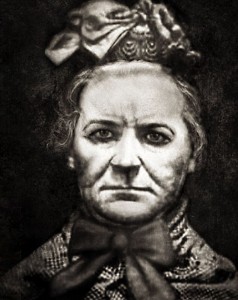Tea- Something that India is known for, something that captivate the connoisseurs of it… The 1974 Hindi-language film, Sagina, has Dilip Kumar play a poor tea plantation worker who fights for his rights against the rather evil, British owner, Mr Cunningham. Things have changed somewhat in the present times. Mr Raj Karan Daftari is not British and in general seems a much nicer man than Mr Cunningham, as he enthusiastically recounts the tale of how he started Bihar’s first tea garden in 1992.

Image Source: Instagram/scroll.in
“The idea first came to me when MJ Akbar, who was a Member of Parliament from Kishanganj, went off to do a nighthold [overnight stay] in a tea garden in Assam,” said Daftari. “It was then that I thought that I should open up a tea garden so that Akbar saab, who was close to me, can do a nighthold right here.” While it is difficult to vouch for the authenticity of the story, by the time the tea garden started, Akbar has ceased to be the MP of Kishanganj and hence maybe missed out on any potential nightholds.
Even so, opening the first tea garden in the state of Bihar was an unachievable feat of no mean proportion. While nominally a part of the Teria region, known for it’s tea cultivation zones, the Pothia region of Kishanganj where Daftari’s gardens are, were too flat to be thought of as suitable for tea cultivation. “But where there is a will, there is a way,” remarked Daftari, clearly pleased with himself. “People told me I was crazy to think of tea gardens in Bihar. I didn’t even have any experience; I was a cloth trader earlier. But I set my mind to it and look what I’ve created,” he said referring to the lush background with a wave of this hand.
It is truly a bit of remarkable story. Thanks to Daftari’s sudden spark of intrepreneurial genius, Kishanganj district, one of the country’s most disadvantaged regions, now has about 25,000 acres of tea plantations as well as three tea processing plants.
Mr Daftari continued, “I have completely transformed this place and have done so much good for all the workers here. They had nothing to do before I introduced tea. Now they are all employed by me or other chai bagans.”
 Most of the tea plantation workers are Oraon adivasis, who traditionally speak an ancient Dravidian language called ‘Kurukh’. Oraons are natives to Bihar, western and eastern Bengal, as well as Jharkhand. There are also a substantial number of Oraons in Assam, who migrated there to work in the tea plantations during the British Raj.
Most of the tea plantation workers are Oraon adivasis, who traditionally speak an ancient Dravidian language called ‘Kurukh’. Oraons are natives to Bihar, western and eastern Bengal, as well as Jharkhand. There are also a substantial number of Oraons in Assam, who migrated there to work in the tea plantations during the British Raj.
When he starts to talk about his workers, though, Daftari, as in turns out, does betray some shades of Cunningham from Saginaafter all.“They are foolish,” he snapped. “They keep on wanting to migrate to the cities instead of living here with their families and working on the tea plantations.”
The worker quarters, if they could even be called that, are terrible, consisting of mostly kaccha houses, which, even in this disadvantaged area, are now increasingly rare. Azhar Rehmani, a local journalist, dismisses all this talk of the tea plantations helping the workers. “Nothing has changed in Pothia for the workers. Only the owners have become richer. It is not for nothing that the plantation owners and traders are called the tea mafia in Kishanganj.”
Daftari ends of with a rant against the National Rural Employment Guarantee Act. “It makes these people lazy. Now they know that they can sit at home and still get paid. And the government never thinks of us. Now we have to pay more to attract worker away from the NREGA. It’s a disaster”- he sighs.
Source: Scroll.in








